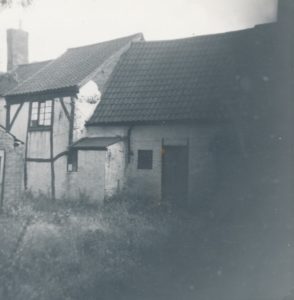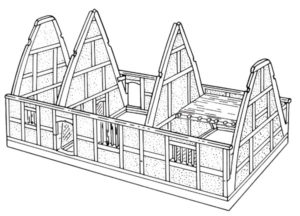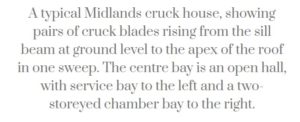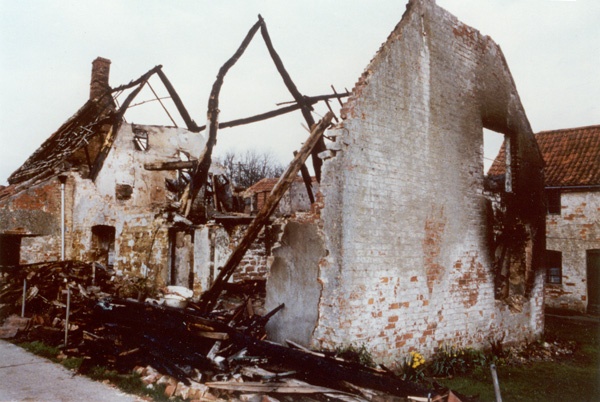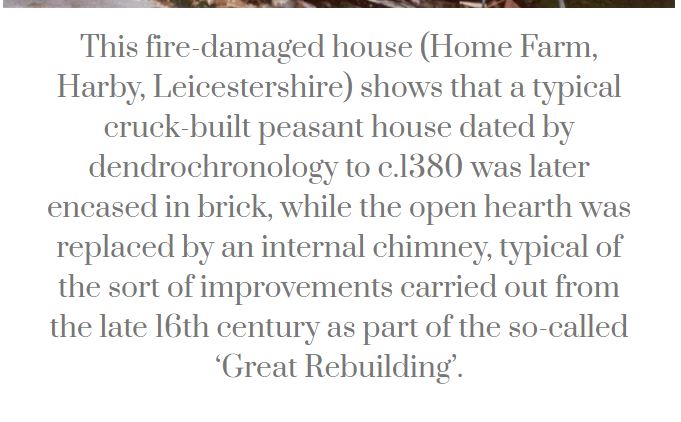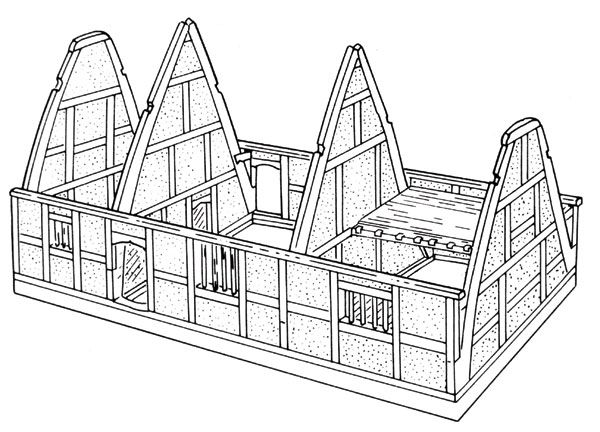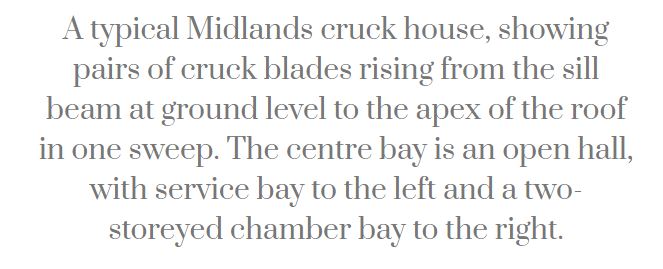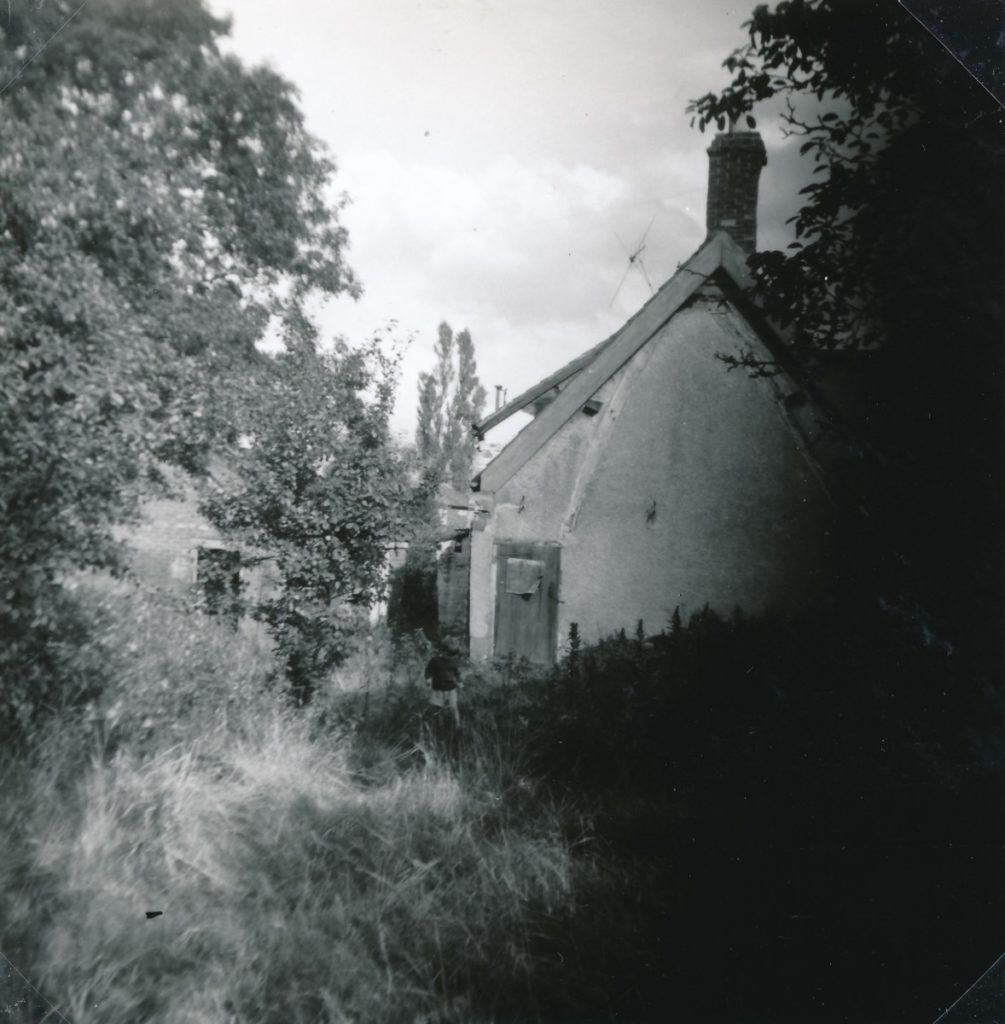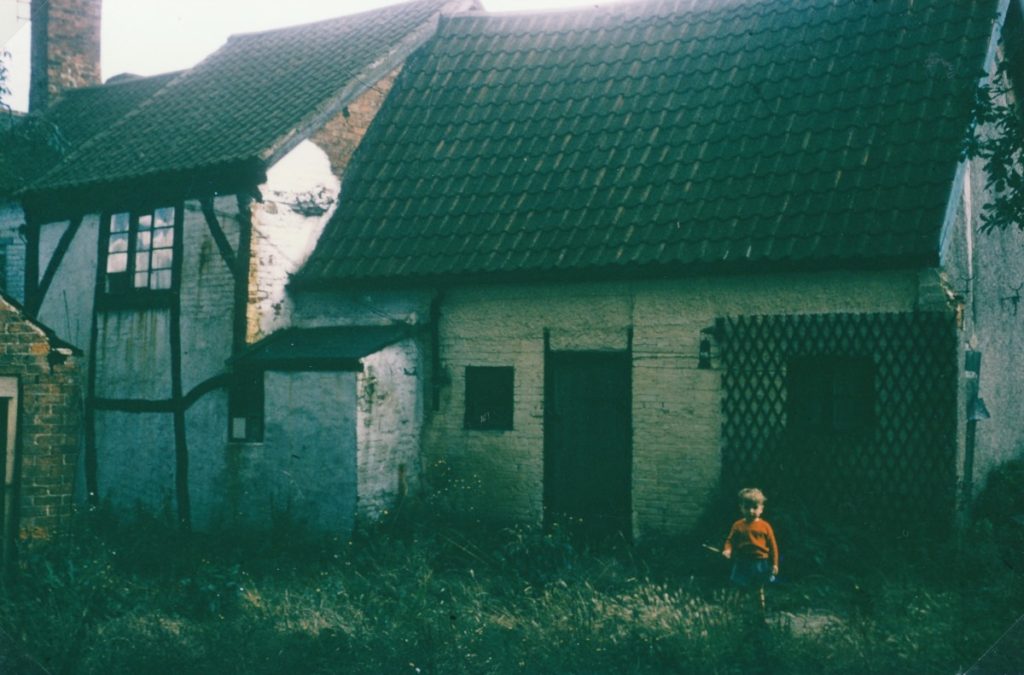This page is still under construction and more will be added in due course.
What is a Cruck Cottage?
The cottage known in the 1800s as Corner’s Yard and later Hodson’s Yard (The Retreat and Holly Cottage) was a Cruck Cottage; it isn’t known when it was first built but they were commonly and generally built from the 1100s onwards through to early Tudor times and particularly in the Midland Counties. These were usually modest houses built by families living off the land.
The Deeds and documents still held by the occupiers of this site only go back to 1803 but photographs taken before the demolition of the cruck cottage (by then split into two cottages) clearly show the cruck construction. Recent research which included surviving cruck houses in Nottinghamshire and Leicestershire found that almost all the houses sampled (using carbon dating and dendrochronology) were built in the 300 year period between the 1260s and the 1550s. It is highly likely that the original cruck structure at Hodson’s Yard stood for several hundred years.
‘Cruck’ or ‘Crook’ comes from the Middle English word ‘crok’ which in turn comes from the Old Norse ‘kraka’ meaning hook or hooked. Words such as ‘crooked’ and shepherd’s ‘crook’ have the same derivation. Mediaeval documents refer to them as ‘furcae’ (fork) buildings. Cruck construction involves a naturally bent timber split into two, they are placed on the ground to form a symmetrical arch and raised into position – the top of the arch (where the timbers meet) forms the roof. They were common because they were so quick and easy to construct.
A simple cruck cottage would be made of one ‘bay’ – a pair of cruck timbers at each end; additional bays could be added by adding a further set of cruck timbers. The spaces between the cruck timbers were filled with whatever building material was mostly easily (and usually cheaply) available and they were generally thatched.
“At first sight it looks like a gingerbread house with a steep roof of wooden tiles, designed to allow the rain to fall off easily, and wattle walls, made of thin, interwoven branches daubed with plaster. It is properly known as a cruck cottage, the crucks being those naturally curved wooden beams that are cut from the branches of trees, usually oak. Fastened at the top by wooden pegs, pairs of crucks provided a strong framework to support the roof, so that the sides of the cottage did not carry the weight but were simply curtain walls to keep out the weather. The windows were just holes in the walls with wooden shutters. At one end stands a stone chimney, down which the light floods on to the hearth. The floor is bare earth. There are wooden shelves suspended by string (…) A simple table and bench is the only furniture in the room, but a platform at one end, reached by a ladder, provides a place to sleep. At the other end is a lean-to shed for livestock, typically a pig or two, perhaps a cow, and hens.”(David Dimbleby; How We Built Britain (2007) referring to a reconstruction of a yeoman farmer’s cottage at Holdenby)
Whilst the framework of the house may have originated in Mediaeval or Tudor times, successive generations will have altered and expanded it as their needs changed. This type of construction has survived particularly well in the Midland Counties and can still be seen incorporated into much more affluent looking modern homes.
Also referenced:
- Peasant houses in Midland England: A detailed article including the construction methods and social history of cruck built houses (Current Archaeology: May 1st 2013: Peasant Houses in Midland England)
- Peasant houses in Midland England: pdf

